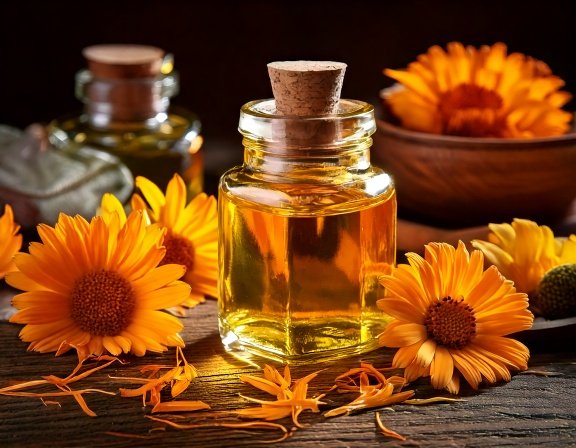How to Grow Calendula: Planting, Care & Harvest Guide

SKIN GLOW BLUEPRINT (PDF)
Discover plant-based skin routines and a carrier oil matrix for a radiant, nourished complexion—inside and out.
Download Free Guide14 Day Digestive Health Reboot
- Science-backed plant protocols for digestion and skin renewal
- Uses natural foods, probiotics, and herbs—no harsh cleanses
- Supports clear skin, regularity, and healthy gut flora in 14 days

Calendula (Calendula officinalis), also known as pot marigold, is a cheerful flower famed for its powerful healing properties. Easily grown in gardens or pots, Calendula offers soothing skin remedies, boosts immunity, and brightens your herbal collection. Discover how you can cultivate and use this versatile herbal beauty right at home.
Fun Fact: Calendula’s nickname, “pot marigold,” comes from its historic use in cooking—flower petals were traditionally added to soups and stews.

Easy Tips for Planting Calendula
Calendula (Calendula officinalis), also known as pot marigold, is one of the easiest and most rewarding herbs to grow. Its bright golden-orange blooms aren’t just beautiful—they’re also medicinal powerhouses, prized for their skin-soothing, anti-inflammatory, and wound-healing properties. Whether you’re growing calendula for skincare remedies, tea, or pollinator appeal, it thrives with minimal effort in most climates.
Plant Type & Zones
Calendula is a hardy annual that adapts well to a wide range of environments, growing successfully in USDA Zones 2–11. In cooler climates, it blooms spring through fall; in warmer regions, it may slow or rest during peak summer heat but reblooms in cooler months.
Sunlight Requirements
Calendula prefers full sun (at least 6 hours per day) for the most abundant and vibrant flowers, though it can tolerate partial shade in hot climates. A little afternoon shade helps prevent wilting during summer heat waves.
Soil Preparation
Plant calendula in well-draining, moderately fertile soil. It isn’t picky and performs well even in average garden soil. Avoid overly rich soil, which can lead to excessive foliage and fewer blooms. Lightly amend with compost before planting to encourage steady growth.
Propagation & Planting
Direct-sow seeds outdoors in early spring as soon as the soil can be worked, or in fall in mild climates for early blooms. Sow seeds about ¼ inch deep and lightly cover with soil. Keep the soil moist until germination, which typically occurs in 7–10 days. Thin seedlings to 8–12 inches apart once they reach a few inches tall to give plants room to breathe and branch out.
Watering & Care
Calendula enjoys consistent moisture but dislikes soggy soil. Water at the base to keep leaves dry and reduce fungal issues. Deadhead (remove spent blooms) regularly to extend flowering. Occasional light pruning can also encourage fresh growth and continuous blooming.
Gardener’s Tip
Continuous sowing is the secret to keeping your calendula patch blooming all season long! Plant new seeds every 2–3 weeks for overlapping waves of flowers. Not only will this ensure a steady supply for teas, tinctures, or salves, but it also attracts pollinators and brightens the garden year-round.

